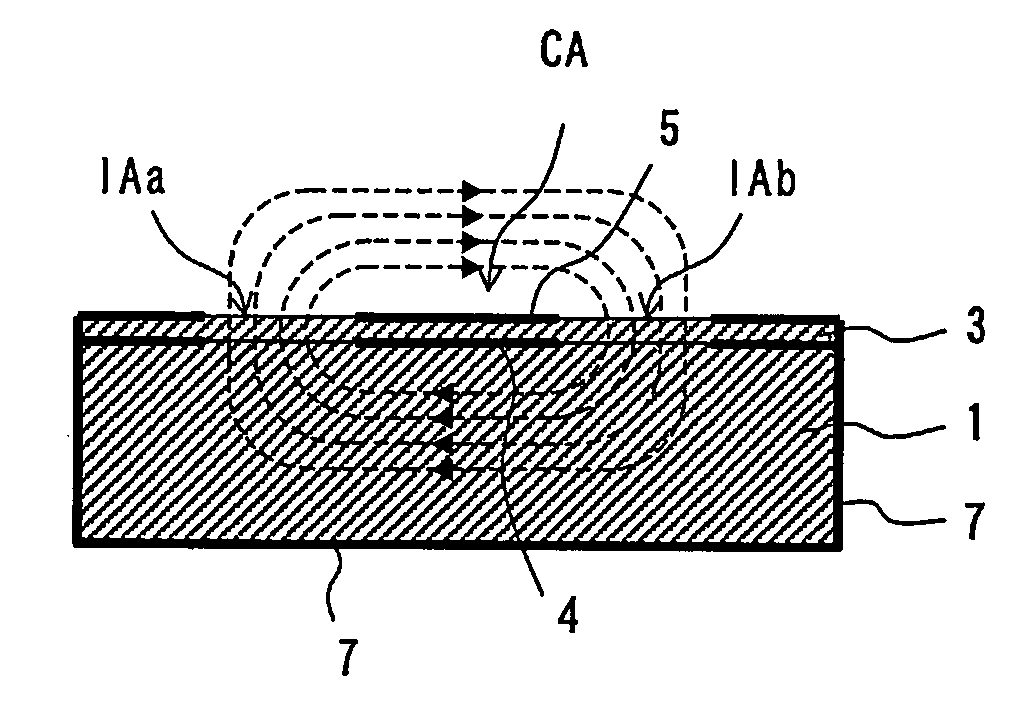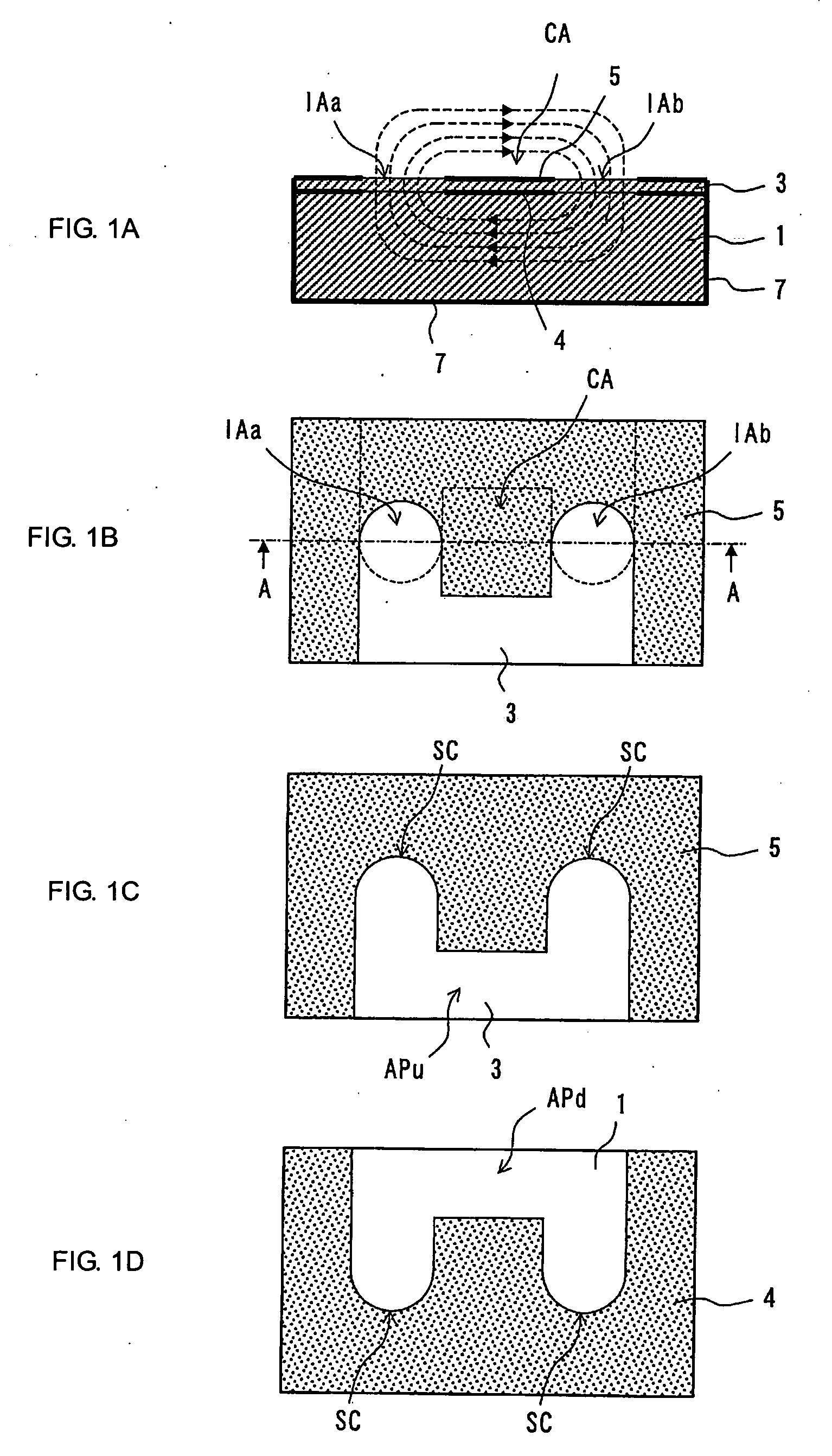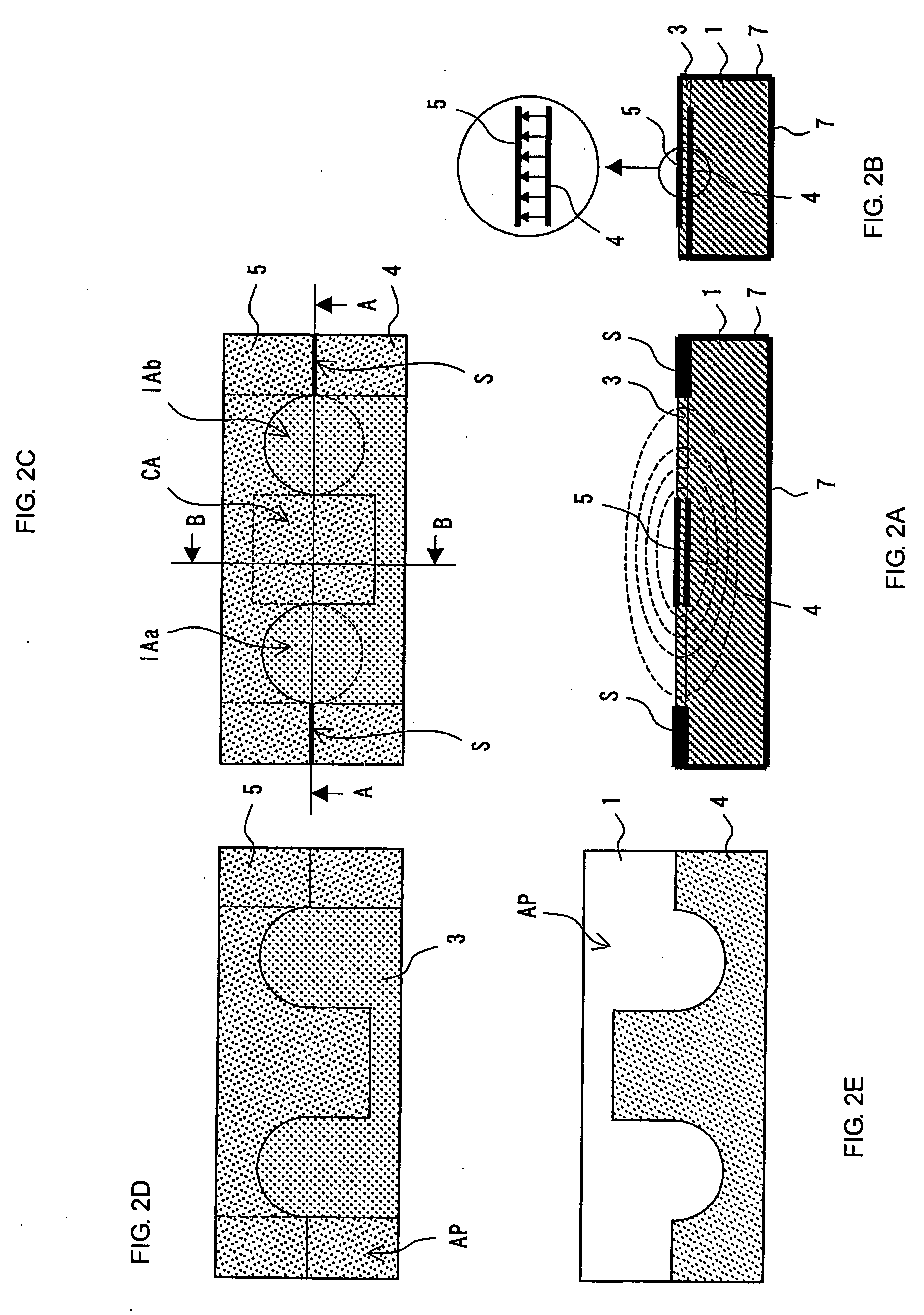Resonator, filter, and communication unit
a filter and communication unit technology, applied in the direction of waveguide devices, resonators, basic electric elements, etc., can solve the problems of difficult to obtain a predetermined resonant frequency with high precision, and the line width cannot be extremely narrow, so as to achieve the effect of small communication apparatus and size of high-frequency circuit parts
- Summary
- Abstract
- Description
- Claims
- Application Information
AI Technical Summary
Benefits of technology
Problems solved by technology
Method used
Image
Examples
first embodiment
[0015] A resonator is discussed below with reference to FIG. 1.
[0016] In FIG. 1, (B) is a top view illustrating the resonator, (A) is a sectional view taken along line A-A in (B), (C) illustrates the pattern of a conductor layer disposed on the top surface, and (D) illustrates the pattern of a conductor layer pattern disposed as the bottom layer.
[0017] On the top surface of a rectangular dielectric substrate 1, a conductor layer 4 having the pattern shown in (D) is formed. A dielectric layer 3 is disposed on the entire top surface of the dielectric substrate 1 on which the conductor layer 4 is formed, and a conductor layer 5 having the pattern shown in (C) is formed on the surface of the dielectric layer 3. With this configuration, a structure in which the conductor layers 4 and 5 are laminated in the thickness direction with the dielectric layer 3 therebetween is formed. In the state in which the conductor layers 4 and 5 are laminated with the dielectric layer 3 therebetween, con...
second embodiment
[0026]FIG. 2 illustrates the configuration of a resonator according to a In FIG. 2, (C) is a top view illustrating the resonator, (A) is a sectional view taken along line A-A in (C), and (B) is a sectional view taken along line B-B in (C). In FIG. 2, (D) illustrates the pattern of a conductor layer 5 as the upper layer, and (E) illustrates the pattern of a conductor layer 4 as the lower layer. Unlike the resonator shown in FIG. 1, in this resonator shown in FIG. 2, the conductor layers 4 and 5 are partially electrically connected to each other by interlayer short-circuit portions S on the top surface of the dielectric substrate 1. The dielectric layer 3 is not present in the interlayer short-circuit portions S. According to this structure, the conductor layers 4 and 5 are short-circuited more reliably in the vicinities of the conductor openings by the interlayer short-circuit portions S compared to the structure in which the conductor layers 4 and 5 are short-circuited only by the ...
third embodiment
[0027]FIG. 3 illustrates the configuration of a resonator according to a In FIG. 3, (C) is a top view illustrating the resonator, (A) is a sectional view taken along line A-A in (C), and (B) is a sectional view taken along line B-B in (C). In FIG. 3, (D) illustrates the pattern of a conducive layer 5 as the upper layer, and (E) illustrates the pattern of a conductor layer 6 as the lower layer.
[0028] The conductor layer 6 is formed in a predetermined portion on the top surface of the dielectric substrate 1. The conductor layer 5 having the pattern shown in (D) is formed on the top surface of the conductor layer 6 with the dielectric layer 3 therebetween. The conductor opening of the conductor layer 5 is formed in a dumbbell shape in which generally circular conductor openings APa and APb are formed at both ends and a slot conductor opening APc having a predetermined width is interposed between the conductor openings APa and APb. The conductor layer 6 is formed in a position near the...
PUM
 Login to View More
Login to View More Abstract
Description
Claims
Application Information
 Login to View More
Login to View More - R&D
- Intellectual Property
- Life Sciences
- Materials
- Tech Scout
- Unparalleled Data Quality
- Higher Quality Content
- 60% Fewer Hallucinations
Browse by: Latest US Patents, China's latest patents, Technical Efficacy Thesaurus, Application Domain, Technology Topic, Popular Technical Reports.
© 2025 PatSnap. All rights reserved.Legal|Privacy policy|Modern Slavery Act Transparency Statement|Sitemap|About US| Contact US: help@patsnap.com



